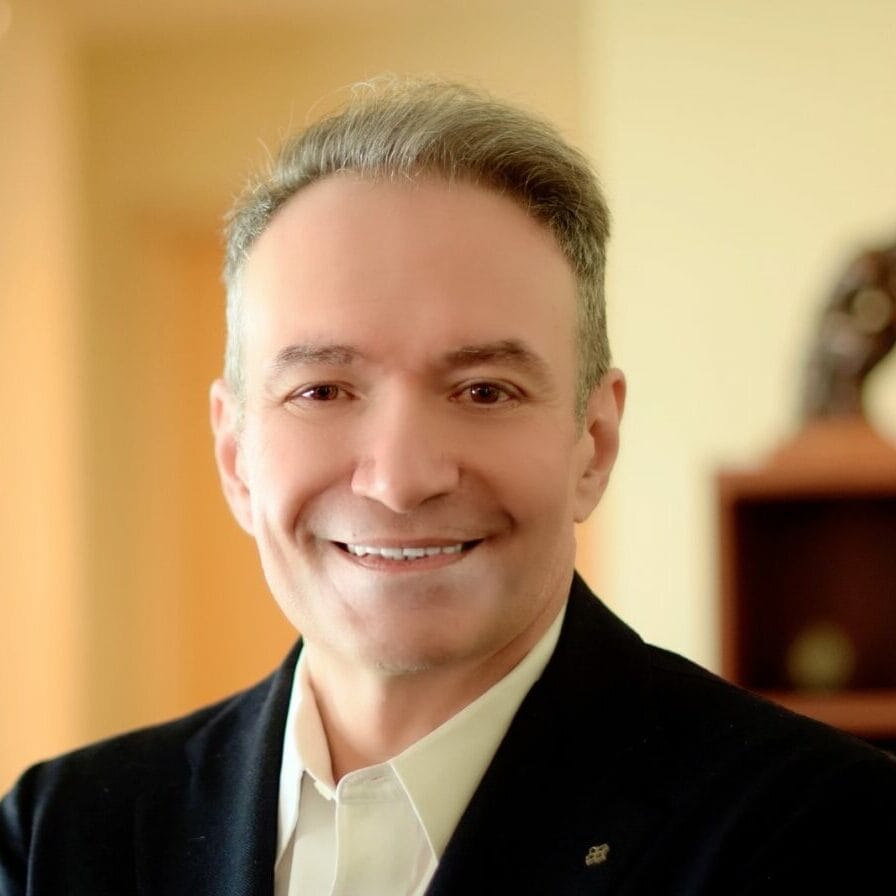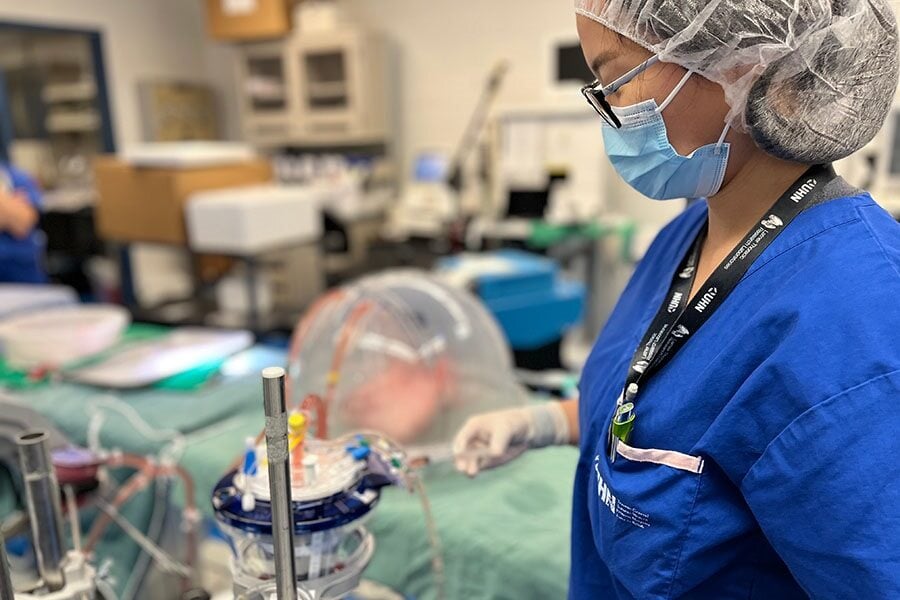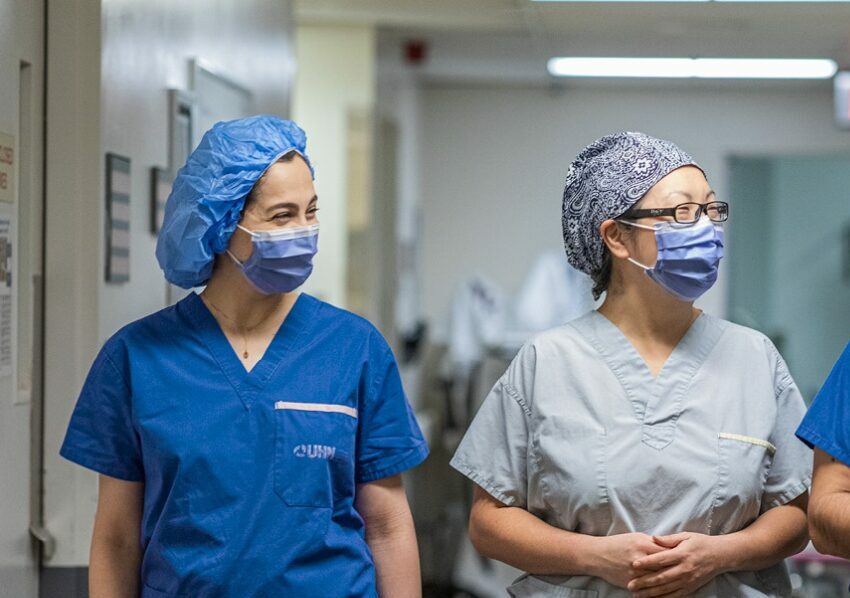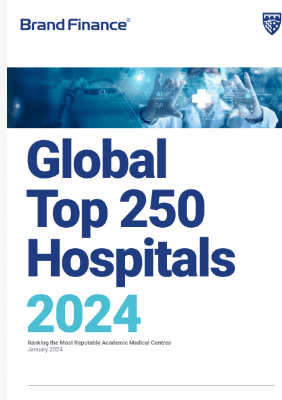This article was originally published in the Brand Finance Global Top 250 Hospitals 2024 report
University Health Network (UHN) is ranked 12th in Brand Finance's second annual Global Top 250 Hospitals ranking, as well as being the top ranked academic medical centre (AMC) in Canada. UHN is recognised for its excellence in patient care, innovation, research and development, and staff training. In a new interview with Brand Finance, Dr. Kevin Smith, President and CEO at UHN, deep dives into the organisation's approach to cultivating and maintaining its reputation as an innovative and inclusive healthcare leader.
Interview with Dr. Kevin Smith

What are your perspectives on the current strength and reputation of the University Health Hospitals Network (UHN) brand, and how do you perceive its differentiation within the industry?
We find ourselves at a fascinating juncture within the University Health Network. Our unique challenge lies in being a house of brands and a brand of houses. Our growth, much like many large businesses, has been marked by mergers and amalgamations. Currently, we stand on the cusp of yet another merger, with a large tertiary rehabilitation facility.
In this context, the primary question for us is how the distinctive contributions from individual organization can combine to become more significant than the sum of their parts. Our constant endeavour is to explore the principles of good, better, and best, always aiming for what 'best in the world' truly entails. Our focus goes beyond national and continental boundaries, aligning closely with the competitive global landscape of academic physicians, scientists, and health professionals.
I often liken UHN to a tricycle, where clinical care serves as the large wheel. While caring for patients is our privilege, education, research, and innovation, constitute the smaller wheels. Achieving a delicate equilibrium that places patient needs at the forefront while excelling in education and pushing scientific boundaries is a constant pursuit. Regularly disseminating scientific findings and innovations into realms like commercialization is part of our routine.


Given the diverse stakeholders and the complex, evolving nature of UHN, how do you foster unity and extract optimal value from the brand, its reputation, and the involved individuals?
Our approach has shifted towards narrating stories from both patients and providers, emphasizing what makes this place exceptional for work, care, research, and training.
In healthcare, where defined silos are prevalent, we deliberately omitted "hospital" from our name -University Health Network. We acknowledge that patients often face challenges during transitional points. Handling complex cases that involve multiple comorbidities, diseases, and various care dimensions presents significant obstacles.
To break down these silos, we've created specialized divisions like an at-home division and a UHN commercialization division. Introducing innovative solutions, such as Canada's first prescribable housing unit, we've identified 230 patients making 15,000 annual emergency room visits. Their visits aren't solely due to emergencies but reflect a lack of alternative assistance. Closer examination reveals these individuals often face challenges like mental health issues, addiction, homelessness, poverty, or childhood trauma.
We initiated the first 51 housing units in Canada, enabling our teams to prescribe housing for at-risk individuals. Integrating technology and algorithms with compassionate human care, we aim to enhance care, especially for marginalized populations, and raise overall healthcare standards. Our goal is to minimize unnecessary emergency visits and address both public and internal stigma related to the diseases we.
To enhance unity, we've adopted a common health information system and the "My UHN" platform, ensuring instant access to all patients’ data upon availability. This underscores our commitment to transparency and informed consumerism. It's a conscious choice, though occasionally controversial, prioritizing the needs of patients over internal concerns.
What future goals is the organization pursuing, and how does the cultivation and maintenance of a strong reputation contribute to these objectives?

In Canada, our reliance on generous philanthropists, both big and small, is considerable. At UHN, we have two embedded foundations—the Princess Margaret Cancer Center Foundation and the UHN Foundation—dedicated to fundraising. Together, they generate around $250 million annually, mainly supporting research, capital equipment, and site redevelopment. While the government covers about 90% of new builds, the remaining 10% is our responsibility, underscoring the importance of philanthropic support, especially for research.
“Our perspective on philanthropic contributions has shifted from viewing them as gifts to recognizing them as strategic investments with societal returns, fostering a more civil society. Major donors, often astute investors, engage us on complex issues like homelessness, primary care access, and the underlying science of diseases, ensuring a significant societal return on investment.”
Beyond individual care, our focus spans population dynamics influenced by health determinants. Sharing success stories, like groundbreaking medical discoveries, instils pride in staff and confidence in patients and donors. This allows us to showcase our excellence and unique position as a jewel in Canada's healthcare landscape. Leveraging industry partnerships enhances capabilities, offering Canadians access to cutting-edge care, technologies, drugs, and scientific advancements.
Historically, in specific markets, medical commercialization has faced stigma. However, the central challenge is building a sustainable organization. How has UHN navigated and leveraged this challenge to establish a robust brand?
At UHN, we've fully embraced this approach. Last year, UHN Ideas generated approximately $4 billion in commercial investment and spinoffs, with $50 million directly benefiting UHN and its science. This marks a notable shift for a system historically resistant to commercial applications in medicine.
We've made remarkable progress, now ranking in the top 20 in North America for commercialization—a notable achievement, especially compared to the profit-driven healthcare landscape in the United States. Unlike their model of opening and closing hospitals based on profitability, our commercialization journey has been swift and successful. Crucially, we've maintained a seamless connection between ensuring universal accessibility and generating revenue through commercialization. The path has been remarkably smooth for us.
How does UHN navigate and address challenges in inspiring and supporting healthcare workers and scientists, particularly in the face of unprecedented difficulties?
In every organization, the primary focus is on inspiring remarkable individuals. Unlike American systems, UHN doesn't rely on paid media for reputation; instead, it's earned through daily experiences with patients, staff, scientists, and trainees. UHN's global alumni in leadership roles around the world testify to the impact of its training, showcasing transformative contributions like pioneering lung transplantation and groundbreaking technology, such as the first drone delivery of organs.
Embracing Canadian humility, UHN, as a system leader, maintains a serious yet balanced commitment, with a weekly focus on improving patient care, enhancing staff experiences, and advancing science—an ongoing priority.
Each week, we reflect on a fundamental question: What actions can we take to elevate patient care, enhance the staff's experience and overall work-life quality, and advance scientific endeavours? If, at week's end, our efforts haven't predominantly centred around these priorities, it's an opportunity for us to refocus and ensure we're performing at our best.

